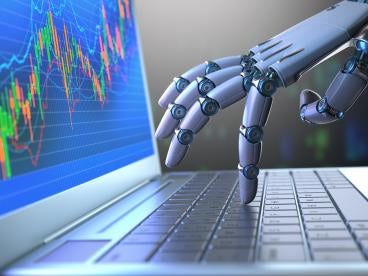Businesses have begun to use robots, drones, and other advanced electronic systems to increase efficiencies and cut costs. And, with their increasing viability and proven efficiencies, robots are transforming the workplace at an accelerated pace.
Businesses Incorporating Robots and Automation to Reduce Costs
For example, in the food industry, Silicon Valley-based Zume Pizza (No. 1 on CNBC's Upstart 25 list), uses a combination of robots and humans to prepare and bake its pizzas, cutting labor costs in half. Zume currently employs 76 workers, far fewer than the average pizza chain of comparable volume. The company — which famously catered “co-bot” pizzas to engineers at Google during the Super Bowl —reinvests it savings in labor costs into higher-quality ingredients to carve out a portion of the $40 billion annual U.S. pizza business.
Likewise, Wendy’s is leveraging new technology to reduce overhead. The fast food restaurant recently announced that it plans to install self-service kiosks in over 1,000 locations to reduce labor costs associated with the movement to establish a national hourly minimum wage of $15. With many cities and states soon to adopt the $15 an hour increase, more service kiosks are expected.
Moreover, international pizza chain Domino’s recently made the world’s first ever pizza delivery by unmanned aircraft system (commonly known as “drones”) in New Zealand.
Indeed, robots promise efficiencies in numerous other industries as well. UPS, for example, recently demonstrated automated package delivery via driverless vehicle and drones, intended to reduce the rising costs associated with human package delivery. In Japan, machines are replacing humans in the hospitality sector. Visitors to a restaurant in a Japan’s Huis Ten Bosch amusement park in Nagasaki Prefecture, for example, now encounter more robots (30) than human workers (7). The robots make pancakes, cocktails, and doughnuts, and also interacting with guests, among other functions.
As technology in both form and function moves ever closer to fully-human and beyond human capabilities, the transformation of the workplace from human to robot promises to accelerate at an ever-increasing pace.
Challenges of Transition to a Robotic Workforce
But taking humans offline has ramifications. Economists posit that automation will drastically affect the traditional workforce, leading to the displacement of workers in entire sectors of the U.S. and global economy. According to a September Forrester report, within five years robots and artificial intelligence agents will eliminate many positions in customer service, trucking, and taxi services, which accounts for approximately 6 percent of all U.S. jobs. Additionally, the Bank of England estimates that eighty million U.S. jobs and 15 million U.K. jobs are at risk from automation. The jobs most at risk from automation tend to have the lowest wage, which also means robots could contribute to an even wider gap between rich and poor.
Opportunities in a Robotic Workplace
Others see automation as creating human workforce opportunities. Zume Pizza’s CEO Julia Collins says that, far from threatening the jobs of its employees, robots free up human workers to develop new recipes, conduct taste tests and tweak customer service. The efficiencies of using robots have also helped fuel Zume’s planned expansion further into the San Francisco Bay Area, which will result in additional jobs. Likewise, Panera Bread has committed to hiring additional food preparers to handle the increased volume of orders enabled through the use of its service kiosks. And while Japan’s Huis Ten Bosch amusement park initially planned to transition its restaurant entirely to robots, the restaurant found additional human workers were needed to provide quality control and robot maintenance. Thus, the restaurant has benefitted from both net efficiencies and increased productivity (read: increased margins) without substantial displacement of its workforce.
Taxing Robot Employees?
Nonetheless, the potential adverse effect of machines replacing humans is real and presents a significant challenge to businesses. To compensate for the anticipated disruption, Microsoft co-founder Bill Gates proposed that if robots take a human offline, the robot should be taxed so tax revenues remain stable. Robot tax revenue and profits generated by the labor-saving efficiency can further be made available to retrain displaced worker to meet the new economic and workforce realities, for example as software developers, maintainers, etc., or to enter fields where there is a shortage of people, such as teachers.
What This Means to You
Robots and automation are the wave of today, not just the future. To take advantage of these emerging technologies and thrive in their industries, businesses need to be aware and discuss with competent counsel both the opportunities and potential challenges of incorporating them into their workforces.




 i
i

